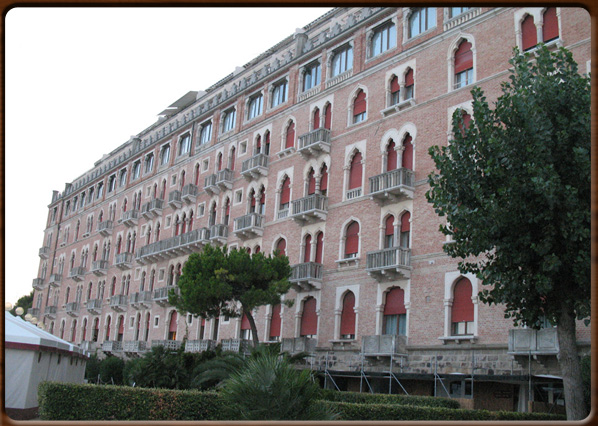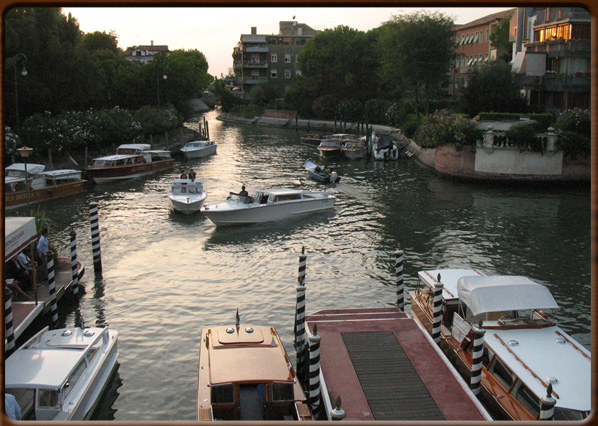
Hôtel Excelsior.

Church and monastery of San Nicolò, protector of fishermen.

Detail of the ancient Jewish cemetery on the Lido.

A channel at the Lido.




No video
The island of Lido is a long, thin strip of sand south of the lagoon that acts as a natural barrier between Venice and the open sea.
Today it is a residential suburb and a seaside resort favoured by Venetians.
In the 19th Century Lido was a favourite with famous writers, such as Shelley, Byron and others.
At the end of the 1800s, Lido became one of the most in vogue bathing centres in Europe, attracting princes and the literati. During this period several famous hotels were built, such as Hotel des Bains (1900) and Hotel Excelsior (1908).
Thomas Mann brilliantly described life in Lido at the height of its splendour in his novel “Morte a Venezia" (1912), which was later turned into a film by Luchino Visconti (1971).
Today, Lido hosts the International Venice Film Festival each September.
The north part of the island contains several historical sites. These include the fortress of Sant’Andrea, on the nearby Isola delle Vignole, built to guard the main entrance into the lagoon. This fortress is famous for the fact that it was here that the last canons were fired against the French on the ship “Le Libérateur” as it entered the port to demand the surrender of the city in 1797.
Then there are the church and monastery of San Nicolò, founded in 1044 and rebuilt in the 16th Century, from where you can enjoy a fabulous view of San Michele and the Jewish cemetery (1386).
400 - 1000 - until today ISOLE - rev. 0.1.8